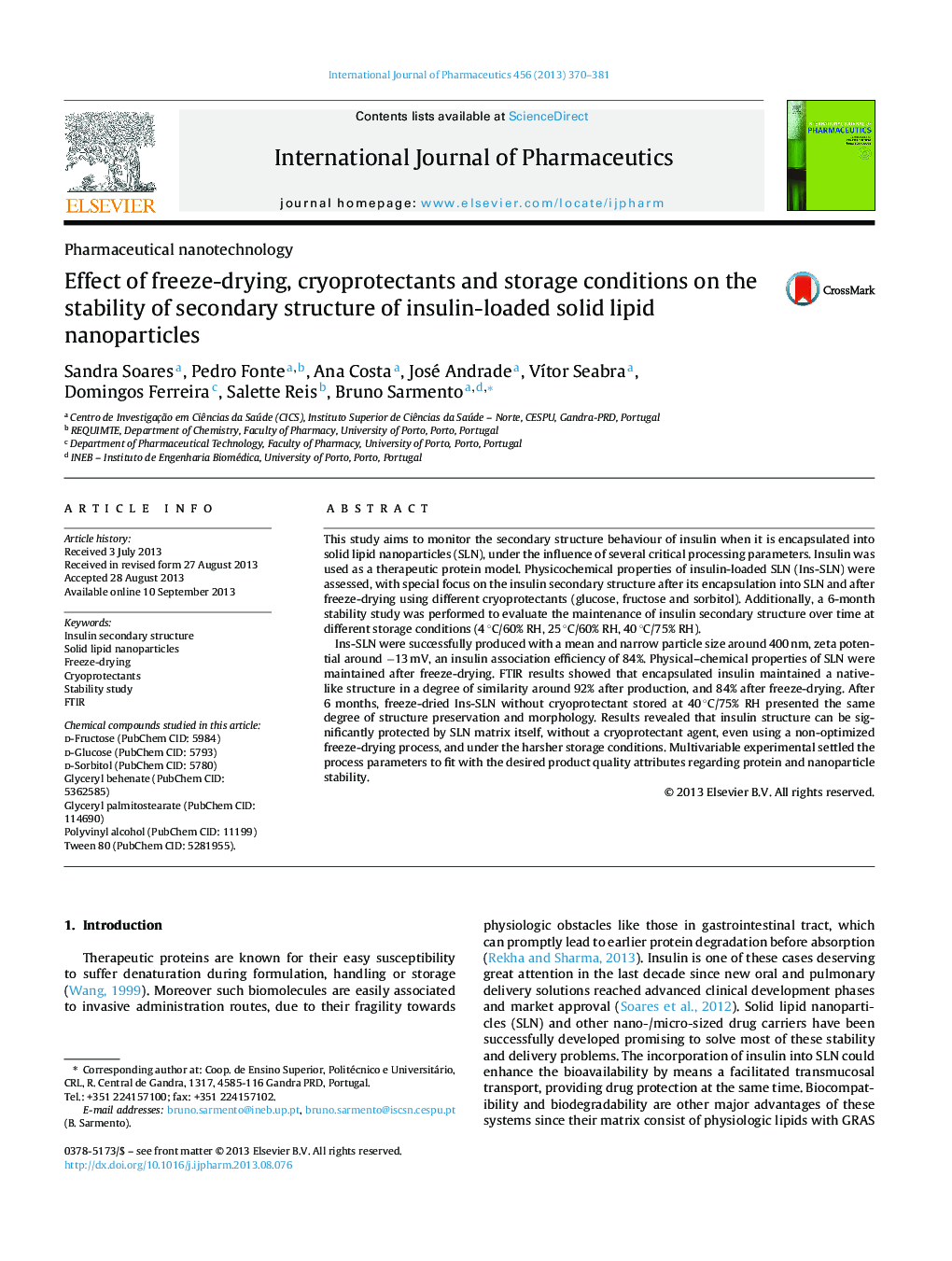| Article ID | Journal | Published Year | Pages | File Type |
|---|---|---|---|---|
| 2502160 | International Journal of Pharmaceutics | 2013 | 12 Pages |
This study aims to monitor the secondary structure behaviour of insulin when it is encapsulated into solid lipid nanoparticles (SLN), under the influence of several critical processing parameters. Insulin was used as a therapeutic protein model. Physicochemical properties of insulin-loaded SLN (Ins-SLN) were assessed, with special focus on the insulin secondary structure after its encapsulation into SLN and after freeze-drying using different cryoprotectants (glucose, fructose and sorbitol). Additionally, a 6-month stability study was performed to evaluate the maintenance of insulin secondary structure over time at different storage conditions (4 °C/60% RH, 25 °C/60% RH, 40 °C/75% RH).Ins-SLN were successfully produced with a mean and narrow particle size around 400 nm, zeta potential around −13 mV, an insulin association efficiency of 84%. Physical–chemical properties of SLN were maintained after freeze-drying. FTIR results showed that encapsulated insulin maintained a native-like structure in a degree of similarity around 92% after production, and 84% after freeze-drying. After 6 months, freeze-dried Ins-SLN without cryoprotectant stored at 40 °C/75% RH presented the same degree of structure preservation and morphology. Results revealed that insulin structure can be significantly protected by SLN matrix itself, without a cryoprotectant agent, even using a non-optimized freeze-drying process, and under the harsher storage conditions. Multivariable experimental settled the process parameters to fit with the desired product quality attributes regarding protein and nanoparticle stability.
Graphical abstractFigure optionsDownload full-size imageDownload high-quality image (149 K)Download as PowerPoint slide
